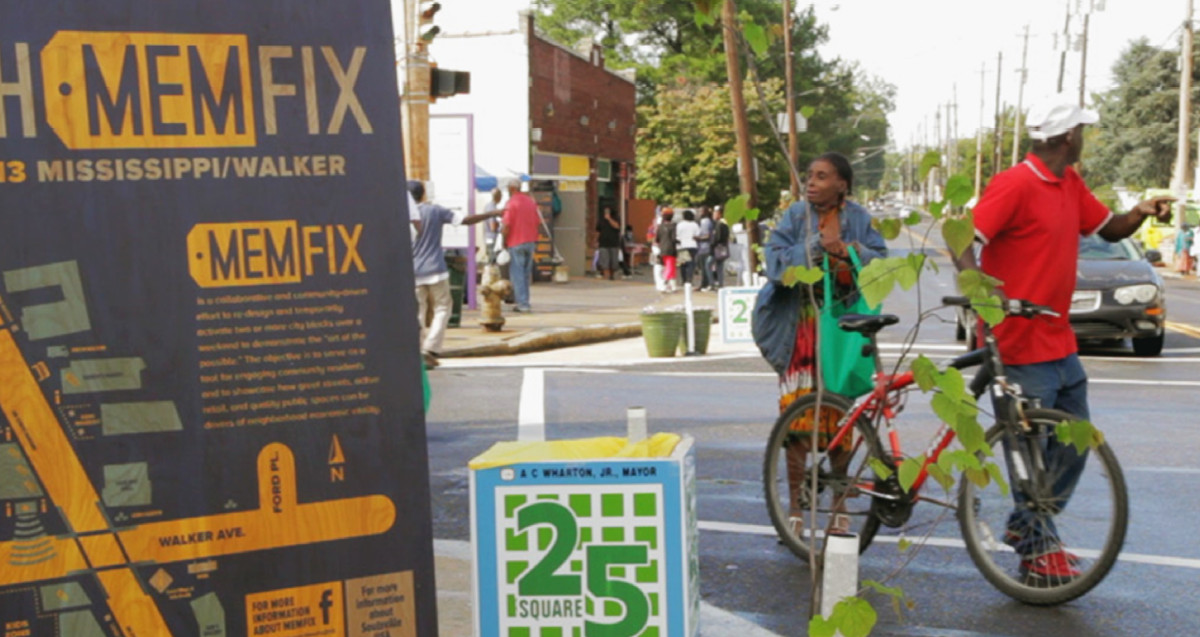South Memphis has been giving gifts to the world for decades.
Aretha Franklin was born on Lucy Avenue. Otis Redding and North Memphis native Isaac Hayes worked out of the Stax Records studio at McLemore and College. Six minutes away by bike is Royal Studios at Willie Mitchell and Richmond, where Al Green (still a local preacher) recorded "Let's Stay Together" and Mark Ronson cut "Uptown Funk" with Bruno Mars.
Elmwood Cemetery, at Walker and Neptune, is a resting place for veterans of every war the United States has fought. At Mason and McEwan is the church where the Rev. Martin Luther King Jr. declared he'd seen the Promised Land; one mile to the northwest is the motel where King was killed the following night, now the National Civil Rights Museum. The huge riverside park just southwest of South Memphis now carries King's name.
But even as South Memphis has left deep marks on U.S. culture, its neighborhoods themselves have suffered. Now the city is working through many channels to reverse that — one of which is putting the district at the front of the queue to get one of the country's first connected networks of all-ages bikeways.
Built as "streetcar suburbs" of downtown Memphis in the early 20th century, South Memphis "was still a fairly prosperous, mixed-income neighborhood" until the 1970s, said Memphis Bikeway and Pedestrian Program Manager Nicholas Oyler.
But as Memphis sprawled outward, the rail transit that had made the neighborhood viable was torn out. More and more space was dedicated to helping cars move faster, often ferrying people between suburbs and city center -- and straight through South Memphis, where one in four households doesn't own a car.
"A lot of the transportation infrastructure that's there today acts more as a barrier than as a connecting agent," Oyler said. "Interstate 55 completely divides the neighborhood off from Riverside Park… There are a lot of people in Memphis that don't even know that Riverside Park exists, maybe a 10-minute bike ride from South Memphis and the downtown."
"On the east side of the neighborhood we again have Interstate 240, another barrier," Oyler added.
But there's plenty happening between the freeways. The old Stax studio now anchors Soulsville, a commercial district whose music-focused charter school serves the area. LeMoyne-Owen College is just up the street; a few blocks in the other direction, the South Memphis Farmers Market is a new hub of activity and good food.
Immediately north of South Memphis is the south side of downtown, an area seeing rapid investment.
"Today it's just a hotbed for new condos, new apartments, businesses coming in," Oyler said.
Part of the city's goal is to better connect those two areas and nearby amenities like Riverside Park and the new Big River Crossing to Arkansas with a series of bike-lane investments -- for example on Florida Boulevard, Mississippi Boulevard, South Parkway, Lauderdale Street and McLemore Avenue.
When Memphis repaves a street, Oyler said, there's often space to fit bike lanes simply by narrowing existing travel lanes. A conventional bike lane added this way costs just $2,000 per lane-mile, he said, and a post-protected bike lane $6,000. Oyler said the city may install some bike lanes in South Memphis without full repaving, which would cost more depending on what changes are made.
Oyler added that street infrastructure may ultimately be less of a challenge in South Memphis than overcoming a common stigma against biking in the area: the idea that it's transportation of last resort.
But better infrastructure and careful outreach, Oyler hopes, will combine with the practicality of biking in the area to bring a new sense of dignity and enjoyment to bicycling.
"I think we have targeted a great, diverse area of our city," he said. "When you combine south downtown and South Memphis, you come up with an area that is pretty representative of the community as a whole."
"The lessons here I think are going to be scalable," he went on. "South Memphis is going to be our proving ground, in a way. But all of Memphis is going to reap the benefits."

This is the third in a series of profiles of the 10 focus areas in the PeopleForBikes Big Jump Project — districts that are planning to quickly install some of the country’s first fully connected all-ages biking networks over the next three years.
PlacesForBikes is a PeopleForBikes program to help U.S. communities build better biking, faster. You can follow them on Twitter or Facebook or sign up for their weekly news digest about building all-ages biking networks.






